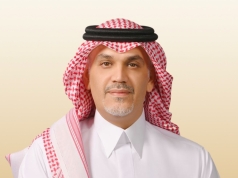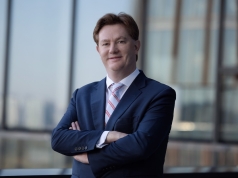JP Morgan Private Bank Global Billionaires Study 2023: 77 Billionaires Family Principals with $4.86 Billion Average Net Worth, 63% with CEO and CIO Roles Separated, 74% Invests More than 25% of Portfolio to Private Investments
18th February 2023 | Hong Kong
JP Morgan Private Bank has released the Global Billionaires Study 2023, with key insights into 77 billionaire family principals with $4.86 billion average net worth totalling $374 billion on their Investment Process, Impact Strategies (Philanthropy & Sustainable investments) and Family Governance (Communication, Next Generation, Conflicts, Decision-Making). In the 77 billionaires family offices, 63% have CEO and CIO (Chief Investment Officer) roles separated while 37% do not have the roles separated. Larger families with more complex portfolios often employ multiple CIOs, each focused on specific asset classes or investment types, and a CEO to provide a critical layer of oversight consistency across the entire portfolio. Smaller family office do not use CEO, with the original wealth creator often acting in the role. On Private Investments, 74% invests more than 25% to private investments while 26% invests less than 25% to private investments. Top 5 Venture Capital & Growth Equity focus are Technology & Biotech (54%), Healthcare (30%), Real estate (25%), Opportunistic (22%), Consumer Products (16%). On Sustainable investing in portfolio, 11% with significant and 11% with small portfolio, while 22% with no exposure, and 52% are not considering. Top 5 Reasons on Philanthropy – Making an impact in the local or global community (74%), Establishing a family legacy or reputation (35%), Duty, obligation or core values (25%), Educating & engaging other family members in giving (22%), Faith (7%). Next Generation Age to be involved in Philanthropy – Some want children included early. Others believe a high level of lived experience is important for deciding where to give money away. Most families stress the importance of age-appropriate engagement. Top 5 Impact interests – Education (66%), Healthcare & medicine (44%), Economic development (37%), Faith & religious affiliation (21%), Climate change & environment (20%). Top 5 ways to communicate & build trust in family – Schedule regular family-wide assemblies (58%), Raise concerns to family council (24%), Host regular online communication channels (15%), Create & update family constitution or charter (15%), Engage in informal communication (15%). Online Communication Channels – Most often are a family office website or portal for family members to access family meeting minutes, financial information or curated news articles. Age to Disclose Family Finances & Business to Next Generation – Some disclose financial information in a formal capacity to younger members, generally starting somewhere between the ages of 18 and 25, dependent on the individual child and/or family unit. Shareholder Exit Procedures – Families with large portions of their wealth linked to equity ownership in one primary business often provide clear procedures for family members who want to exit as shareholders. Billionaire Principal on Rolls-Royce (Reference to Managing Wealth) – If they’re going to inherit a Rolls-Royce, we must teach them how to drive, so that they don’t crash. Billionaire Principal on ESG – ESG can be a marketing technique. You cannot chase the momentum of ESG in the moment; we want to chase what is truly sustainable. Billionaire Principal on Importance of Unity in Decision-Making – Some might say that this works against us, but the unity has far more value long-term than any particular deal. In the study, the billionaires by the top 10 industries are Financial Services & Investments (13), Consumer (11), Real Estate (7), Manufacturing & Industrials (6), Diversified (6), Logistics & Airlines (6), Media (4), Oil & Gas (4), Travel & Leisure (4), Automotives (3), Healthcare (3). Read the key summary below | View JP Morgan Global Billionaires Study 2023 here
“ 77 Billionaires Family Principals with $4.86 Billion Average Net Worth, 63% with CEO and CIO Roles Separated, 74% Invests More than 25% of Portfolio to Private Investments “
JP Morgan Private Bank Global Billionaires Study 2023: Stewardship & Purpose – Conversations with the world’s wealthiest families – a study conducted by the firm’s 23 Wall Team. The Private Bank’s report captures insights from conversations with nearly 80 billionaire family principals across the globe with an average net worth of $4.86 billion on how they approach crucial areas such as family governance, values-driven impact strategies, and investments. J.P. Morgan’s 23 Wall is a specialized global team that provides select families with access to the firm’s intellectual capital, balance sheet and deal flow. The team engages with more than 700 families, representing over $4.5 trillion in private capital, offering direct access to the Corporate & Investment Bank. The name is rooted in our rich history and dates to 1871, when our firm’s New York headquarters opened at 23 Wall Street in Lower Manhattan.
JP Morgan Global Wealth Management Executive Chairman Andrew L. Cohen: “One of the Private Bank’s greatest honors is the opportunity to work with some of the world’s wealthiest families, many of which we have served for generations. Their generosity of time and insight provided a unique window into how these families think about their wealth and seek to build their legacies. As families expand and transfer their wealth and legacy, principals at the helm feel that providing the next generation with more flexible choices allows them to both shine and better benefit the family based on their unique strengths. A common theme is that they don’t want anyone to feel forced on to one singular track. For most families, the idea of ‘giving back’ is no longer a question of just donating money. Most families take a holistic approach that helps shape family charitable, business and investment decisions, focused on applying their families’ values and missions across all their various avenues of capital.”
JP Morgan Asset & Wealth Management Chief Operating Officer Benjamin Hesse: “In their own words, these families share lessons, real-life examples, honesty and a tremendous amount of detail on a wide array of topics and concerns they face. Overwhelmingly, they stressed the importance they place on being good stewards of wealth and, even more significantly, building a connected family.”
JP Morgan Private Bank Global Billionaires Study 2023

JP Morgan Private Bank has released the Global Billionaires Study 2023, with key insights into 77 billionaire family principals with $4.86 billion average net worth totalling $374 billion on their Investment Process, Impact Strategies (Philanthropy & Sustainable investments) and Family Governance (Communication, Next Generation, Conflicts, Decision-Making).
Global Billionaires Study 2023 – Summary
- Billionaire Interviews – 77 Principals with average net worth $4.86 billion
- Billionaire Total Net Worth – $374 billion
- Billionaire Region: 40 from North America, 14 from Latin America, 12 from Asia-Pacific, 11 from Europe, Middle East & Africa
- Billionaires by Top 10 Industry – Financial Services & Investments (13), Consumer (11), Real Estate (7), Manufacturing & Industrials (6), Diversified (6), Logistics & Airlines (6), Media (4), Oil & Gas (4), Travel & Leisure (4), Automotives (3), Healthcare (3)
Investments and Impact Strategies (Philanthropy & Sustainable investments) – Key Summary
- CEO and (CIO) Chief Investment Officer roles are separated – 63% Yes / 37% No
- Multiple CIOs – Larger families with more complex portfolios often employ multiple CIOs, each focused on specific asset classes or investment types, ands a CEO to provide a critical layer of oversight consistency across the entire portfolio.
- Smaller Family Office do not use CEO – Families that are not working with a family office CEO tend to be smaller, with the original wealth creator often acting in the role.
- Principal / CEO is sometimes the CIO – Depending on family size and portfolio complexity, This is more common when the wealth creator’s background is in investment management.
- Family Remains Involved Investment even with CEO – While CEO helps guide decisions, often times family members remain heavily involved, and generally retain final approval for sizeable & important investment
- On 3rd Party to Manage Family Investments – As a family grows in number of members and generations, the likelihood that it engages a 3rd party to manage its financial assets grows as well, typically through a family office
- Non-direct investments invested in passive / index strategy – 67% invests less than 25% in passive / index strategy while 33% invests more than 25% in passive / index strategy
- Asset allocation to private investments – 74% invests more than 25% to private investments while 26% invests less than 25% to private investments
- Investment preferences – Shaped by factors such as family size, their sources of wealth, how much of their assets are invested in their operating businesses, and members’ familiarity and expertise with specific industries and investment areas
- Preference for active management – Most families invest in a mix of passive & active investment strategies. Clear preference toward actively managed investments to unlock greater value & alpha creation in their investments, rather than how to lower fees. When passive investments are used, it is usually in highly liquid public equity markets
- Direct investment goals – Principals tend to think about their direct investment strategies in one of 2 ways: to create synergies or to diversify. Investments are primarily viewed as a way to complement the principals’ own operating businesses or to take advantage of their specific expertise. Some view direct investments as a way to help diversify away from their operating businesses.
- Growing demand for private investments – Increased focus on private investments in recent years
- Experience matters – Successfully investing in private companies is a difficult, time-intensive process. Benefit of tapping into experts to focus on the full investment lifecycle when investing in direct private deals, and recommend that if a family does not want to have full-time employees, then it should completely outsource these investments. The general advice seems to be “don’t rush it.” Many families also find working with other families with more expertise in the segment to be extremely helpful.
- Active or passive role for Private investments – 44% Active, 25% Active with Majority Shareholdings, 25% Passive
- Top 5 Venture Capital / Growth Equity Focus – Technology & Biotech (54%), Healthcare (30%), Real estate (25%), Opportunistic (22%), Consumer Products (16%)
- Top 5 Reasons on Philanthropy – Making an impact in the local or global community (74%), Establishing a family legacy or reputation (35%), Duty, obligation or core values (25%), Educating & engaging other family members in giving (22%), Faith (7%)
- Larger Family in Philanthropy – Larger families, philanthropic efforts are often managed by a senior member other than the original wealth creator, typically a sibling or spouse. Similar to their operating companies, families frequently use subject-matter experts to help educate them on particular areas of giving, and seek to bolster their boards with expertise in the space while still retaining a strong family presence, especially at the board level to maintain familial control.
- Age to be involved in Philanthropy – Some want children included early. Others believe a high level of lived experience is important for deciding where to give money away. Most families stress the importance of age-appropriate engagement.
- Top 5 Impact interests – Education (66%), Healthcare & medicine (44%), Economic development (37%), Faith & religious affiliation (21%), Climate change & environment (20%)
- Philanthropy Setup – Most families approach philanthropy at both a centralized and individual level. amilies use centralized giving to reflect values down the generations, and individual giving to allow for members to give in line with their independent interests and expertise, often via separate structures and, perhaps, thematically different.
- Individual Family Member Philanthropy – Individual members are able to create their own foundations supported by the centralized back-office functions run by the family office (Eg. Grant writing, taxes, payments and other administrative tasks.)
- Sustainable investing in portfolio – 11% with significant & 11% with small portfolio, 22% with no exposure, 52% are not considering
- Sustainable investing hesitancy – Most have not applied a formalized ESG approach in their portfolios. Common reasons for not yet taking action include feeling that it is too early as the segment continues to develop, concerns about greenwashing, a general lack of standardization in the space, and not knowing how to incorporate sustainable investing criteria into their portfolio allocations. Older generations, in particular, tend to have mixed feelings about it, while younger generations are more interested.
- Sustainability in operating businesses – Even when families are not explicitly focused on sustainability in their portfolios, many are in their operating businesses. Business owners who are actively incorporating sustainable initiatives and standards to meet evolving industry best practices and, potentially, investor demand
On Family Governance – Key Summary
- Top 5 ways to communicate & build trust – Schedule regular family-wide assemblies (58%), Raise concerns to family council (24%), Host regular online communication channels (15%), Create & update family constitution or charter (15%), Engage in informal communication (15%)
- Online Communication Channels – Most often are a family office website or portal for family members to access family meeting minutes, financial information or curated news articles. Tend to be used by large multigenerational families, as smaller families often live within close proximity and can rely much more on in-person communication. Online communication appears to be somewhat more frequent with next-generation family members.
- Informal Communications – Informal communications such as telephone calls, email and messaging platforms like WhatsApp and iMessage as a way to help communicate and build bond. Usage tends to expand as families get bigger and begin to place greater emphasis on building connections across branches.
- Top 5 Ways to equip Next Generation – Enrol next generation in educational courses (48%), Younger members to work outside of the family enterprise (33%), Provide opportunity to ask questions & address concerns (28%), Share family history & lessons with younger members (24%), Involve youngest family members in some financial decisions (15%)
- Age to Disclose Family Finances & Business – Some disclose financial information in a formal capacity to younger members, generally starting somewhere between the ages of 18 and 25, dependent on the individual child and/or family unit. Start to involve younger family members in some financial decisions or giving children a small pool of capital for them to invest on their own. Encourage younger members to participate in family committees in specific areas. Involve younger members in family meetings and business.
- Top 5 ways to manage family conflict – Maintain a transparent & open environment (23%), Communicate a clear procedure & steps for a shareholder exit (22%), Communicate clear policies governing compensation (19%), Communicate clear expectations for family members, spouses & partners (19%), Establish rules clarifying how to express feedback or points of dissension (17%)
- Conflict Management – United family is very important, both personally and financially.
- Transparency – Importance of establishing transparency & accountability. Family members have access to information such as minutes from family council or shareholder meetings, or financial information on investments or the operating business.
- Shareholder Exit Procedures – Families with large portions of their wealth linked to equity ownership in one primary business often provide clear procedures for family members who want to exit as shareholders.
- Compensation Policies – The need to communicate clear compensation policies, primarily those with operating businesses.
- Decision-making & dissension rules – Many prioritize consensus decision making, with some families acting only if everyone agrees. It is also common to appoint independent, non-family members to help make decisions in a neutral way.
23 Billionaire Principal Quotes
- Governance – If you have a clear standard, it’s easier to conduct without conflict.
- Business Expertise – You need an organization to invest in private markets effectively, a real team of people who do this 24/7, or you can be in over your head
- Hot Investment Deals – Don’t worry about missing out on what looks to be a hot deal if you don’t yet have the necessary experience or setup – you’re much more likely to mess up than succeed
- Involvement in Investments – We will be involved in investments in areas we know well, but we want a globally diverse portfolio, and to do that we need to outsource management to those who know what they are doing in areas outside our expertise.
- On Philanthropy – We have been blessed with wealth, so we have to give back
- Best Philanthropy – The best philanthropy is helping someone to be self-supporting
- Investing into Companies – We would never invest in a company that didn’t align with our values—that’s just not who we are.
- Trust in Corporate Board – We would never invest with a corporate board that we didn’t trust.
- On ESG – ESG can be a marketing technique
- ESG vs Sustainable – You cannot chase the momentum of ESG in the moment; we want to chase what is truly sustainable.
- Impact though Employment – The people I’m employing are in developing countries, and I’m giving them good jobs that help enrich their lives and raise their standards of living.
- Family Values & Goals – You can’t align governance with the family’s values and goals if those haven’t been defined.
- Communication – Everything we do is based off communication.
- Actions – Communicate or Litigate
- Family Bond – My mother didn’t know all of her cousins growing up, but I do, because we have taken the time to build these bonds
- Inheriting a Rolls-Royce (Reference to Managing Wealth) – If they’re going to inherit a Rolls-Royce, we must teach them how to drive, so that they don’t crash.
- Option to Leave – People are more likely to stay if they don’t feel like they have to
- On Next Generation Managing Family Wealth– We don’t need our kids to know all the details of managing wealth – we can hire people to do that – but we do need them to understand how to represent the family.
- Being Informed vs Happiness – Everyone doesn’t need to be happy, but they need to be informed
- Cause of Hate & Disbelief in family – Ignorance breeds hate and disbelief
- On being Open & Transparent – The more you share, the more open, transparent and easier it is to reflect and amend to the family’s needs in a way that is relevant
- Gossips – We don’t want anyone to have their own myth about what is going on
- Importance of Unity in Decision-Making – Some might say that this works against us, but the unity has far more value long-term than any particular deal.
JP Morgan Private Bank Global Billionaires Study 2023
The Study
- No. of Billionaire Interviews – 77 Principals
- Average Net Worth – $4.86 billion
- Total Net Worth – $374 billion
- Region: 40 from North America, 14 from Latin America, 12 from Asia-Pacific, 11 from Europe, Middle East & Africa
No. of Billionaires by Source of Wealth
- Financial Services & Investments – 13
- Consumer – 11
- Real Estate – 7
- Manufacturing & Industrials – 6
- Diversified – 6
- Logistics & Airlines – 6
- Media – 4
- Oil & Gas – 4
- Travel & Leisure – 4
- Automotives – 3
- Healthcare – 3
- Marketing – 2
- Entrepreneur – 2
- Technology – 2
- Art – 1
- Commodities – 1
- Agribusiness – 1
- Life sciences – 1
Key Findings – 3 Consistent Theme to Unite Family by Properly Practicing its Values & Stewarding its Wealth:
- Investments – Think holistically about how your investment strategy fits into your balance sheet
- Values, Philanthropy & Sustainable Investments – Create a formalized & institutionalized approach to giving & sustainability
- Family Governance – It’s never too early to have a discussion about family governance
1) On Investments
JP Morgan: As a family grows in number of members and generations, the likelihood that it engages a 3rd party to manage its financial assets grows as well, typically through a family office. Families tend to use family offices in highly personal ways that vary based on unique considerations, needs and objectives. Variables include how much of their wealth is managed by the family offices, the sophistication and scope of services, and the types of investments they include in their portfolios. While our conversations found a number of common themes, we focused on 2: Institutionalizing Portfolio Oversight & Investment Preferences.
A) Family office have a CEO / President that is separate from a CIO (Chief Investment Officer):
- Yes – 63%
- No – 37%
The roles of CEOs and CIOs:
- Most principals work with a family office CEO, and importance of the role in setting a clear investment statement & providing institutionalized portfolio oversight
- Larger families with more complex portfolios often employ multiple CIOs, each focused on specific asset classes or investment types, and a CEO to provide a critical layer of oversight consistency across the entire portfolio.
- Families that are not working with a family office CEO tend to be smaller, with the original wealth creator often acting in the role. Depending on family size and portfolio complexity, Principal / CEO is sometimes the CIO. This is more common when the wealth creator’s background is in investment management.
Family involvement in Investment
- While CEO helps guide decisions, often times family members remain heavily involved, and generally retain final approval for sizeable & important investment
- Structure – Eg. Investment committee that includes family members and senior members of the family office, such as the CEO & CIO(s), and acts as a governing body for significant transactions & strategic investment allocations.
- Billionaire Principal Quote – If you have a clear standard, it’s easier to conduct without conflict.
B) Non-direct investments in passive / index strategy:
- Portfolio more than 75% – 16%
- Portfolio 50% to 75% – 8%
- Portfolio 25% to 50% – 10%
- Portfolio 10% to 25% – 15%
- Portfolio less than 10% – 52%
67% invests less than 25% in passive / index strategy while 33% invests more than 25% in passive / index strategy.
C) Family asset allocation to private investments:
- Portfolio more than 75% – 20%
- Portfolio 50% to 75% – 30%
- Portfolio 25% to 50% – 23%
- Portfolio 10% to 25% – 17%
- Portfolio less than 10% – 9%
74% invests more than 25% to private investments while 26% invests less than 25% to private investments.
Investment preferences – Shaped by factors such as family size, their sources of wealth, how much of their assets are invested in their operating businesses, and members’ familiarity and expertise with specific industries and investment areas
Investment preferences 2 key themes – 1) General comfort & willingness in paying higher investment fees for expertise that can help create added investment value over time. 2) broad use of direct investments into private companies.
Preference for active management – Most families invest in a mix of passive & active investment strategies. Clear preference toward actively managed investments to unlock greater value & alpha creation in their investments, rather than how to lower fees. When passive investments are used, it is usually in highly liquid public equity markets
Direct investment goals – Principals tend to think about their direct investment strategies in one of 2 ways: to create synergies or to diversify. Investments are primarily viewed as a way to complement the principals’ own operating businesses or to take advantage of their specific expertise. Some view direct investments as a way to help diversify away from their operating businesses.
Growing demand for private investments – Increased focus on private investments in recent years
Good fit – Principals describe their families as good private company shareholders. Tend to take long-term views with their investments, and appreciate financial assets that do the same. Have experience managing successful companies, allowing them to add significant value to companies. Well positioned to assist with private investment decisions, sharing their insights & expertise in the segment. Connecting families with deal flows, and making useful introductions.
Focus for next-generation members – Families use direct private investment to engage next generation & expand their interests. Encouraged entrepreneurial spirit by providing next-generation family members with access to capital for startups and/or direct investing.
Experience matters – Successfully investing in private companies is a difficult, time-intensive process. Benefit of tapping into experts to focus on the full investment lifecycle when investing in direct private deals, and recommend that if a family does not want to have full-time employees, then it should completely outsource these investments. The general advice seems to be “don’t rush it.” Many families also find working with other families with more expertise in the segment to be extremely helpful.
- Billionaire Principal Quote – You need an organization to invest in private markets effectively, a real team of people who do this 24/7, or you can be in over your head
- Billionaire Principal Quote – Don’t worry about missing out on what looks to be a hot deal if you don’t yet have the necessary experience or setup – you’re much more likely to mess up than succeed
D) In private investments – Prefer to be active from a governance or operational perspective:
- Prefer to take an active role in the governance or operations for most or all of our investments – 44%
- Prefer to be active investors in majority investments, but passive in minority investments – 25%
- Prefer to be passive investors – 25%
Direct company involvement
- Involvement usually takes the form of governance or operational roles, such as board members or business advisors. Wealth creators and families managing an operating business are more likely to take such a role.
- The more removed family members are from the operating business, the more passive they tend to be in their private investments
- Usually expand their roles for larger investments
Billionaire Principal Quote – We will be involved in investments in areas we know well, but we want a globally diverse portfolio, and to do that we need to outsource management to those who know what they are doing in areas outside our expertise.
E) Venture capital & growth equity investments focus:
- Technology (Includes biotech) – 54%
- Healthcare – 30%
- Real estate – 25%
- Opportunistic – 22%
- Consumer products – 16%
2) Values-Driven Impact Strategies
JP Morgan: For majority of families, the idea of “giving back” has long been embedded in the fabric of their family values. Giving back is no longer just a question of donating money; it is often a holistic approach that helps shape family charitable, business and investment decisions. Many families are increasingly focused on applying their families’ values and missions across all of their various avenues of capital. Our research examined the variety of ways families actively give back to society and put values into practice, with a specific focus on philanthropy and sustainable investing.
- Billionaire Principal Quote – We have been blessed with wealth, so we have to give back
A) Top motivators for giving philanthropically:
- Making an impact in the local or global community – 74%
- Establishing a family legacy or reputation – 35%
- Duty, obligation or core values – 25%
- Educating & engaging other family members in giving – 22%
- Faith – 7%
Philanthropy – Powerful tool for families to practice their values in a meaningful way. Highly effective means for aligning a family and its wealth to its values. Well-run philanthropy can help support the family’s local community, honor its history, teach younger members responsibility and engage all members across backgrounds.
Family giving goals – Most frequently mentioned goal is making an impact in the local or global community (their primary motivation). Charitable support related to the family’s history is a popular approach. Carry on the philanthropic giving of loved ones who have passed away to honor their memories. Families who have immigrated to focus philanthropic efforts on their origin countries (Teach their children where they came from & how it has shaped who they are)
Family participation – Larger families, philanthropic efforts are often managed by a senior member other than the original wealth creator, typically a sibling or spouse. As families expand, members naturally have differing backgrounds, experience & expertise, and philanthropy offers a way to engage those with diversified interests, such as education, health or community engagement. Important to keep family involved even after setting up a staff-led foundation. Similar to their operating companies, families frequently use subject-matter experts to help educate them on particular areas of giving, and seek to bolster their boards with expertise in the space while still retaining a strong family presence, especially at the board level to maintain familial control.
A way to engage the next generation – An effective way to get younger members more involved with the family and to teach them about money & the family’s values. Helps gauge where their personal interests may lie. Principals voiced mixed opinions on what age next-generation members should be in regard to their involvement in family giving. Some want children included early. Others believe a high level of lived experience is important for deciding where to give money away. Most families stress the importance of age-appropriate engagement.
- Billionaire Principal Quote – The best philanthropy is helping someone to be self-supporting
B) Impact / Philanthropy issues most interested or involved in:
- Education – 66%
- Healthcare & medicine – 44%
- Economic development – 37%
- Faith & religious affiliation – 21%
- Climate change & environment – 20%
Causes & focus areas
- Most popular charitable causes are supporting local community, education and healthcare/hospitals, with many principals noting the desire to “give to where you live.”
- Financial gifts to alma maters, schools attended by the family’s children and community charter schools.
- Education is also often referred to as a “good cause with exponential benefits.”
- Donations frequently have a personal connection for many people, such as building a hospital or medical center in a local community to help their neighbors and, often times, their employees
- Faith-based giving as a way to practice their beliefs and values, and a way to help teach those beliefs and values to future generations.
- As climate change continue to rise, more families have become focused on mitigating its effects
Balancing personal & family giving
- Most families approach philanthropy at both a centralized and individual level
- Individual giving allows family members to have freedom to support different areas of interest.
- Families use centralized giving to reflect values down the generations, and individual giving to allow for members to give in line with their independent interests and expertise, often via separate structures and, perhaps, thematically different.
- Individual members are able to create their own foundations supported by the centralized back-office functions run by the family office (Eg. Grant writing, taxes, payments and other administrative tasks.)
C) Sustainable investing in portfolio:
- We are thinking about or considering sustainable investing – 52%
- Sustainable investing does not currently play a role – 22%
- No formal sustainable investing strategy, but a value-aligned approach – 18%
- We carve out a small portion of our portfolio for sustainable investing – 11%
- Sustainable investing plays a significant role in how we think about investing – 11%
Sustainable investing – Can create positive societal impacts while achieving attractive financial returns through sustainable investing. Take a broader view on how they define sustainability, both in their investment portfolios and in their operating businesses.
An area of increasing focus – Large push to formalize and institutionalize these practices, often driven by younger generations. Members across generations tend to agree that their families make investments aligned with their values, even if that process had not been codified
Focus on values – One of the most frequent ways sustainable investing is practiced is through values-based exclusions.
Thematic investing – Many principals are beginning to invest in sustainable and environmentally friendly industries because they like a specific company, segment and/or business idea. Some investments are driven solely by the attractive economics of mega-trends that happen to be sustainable and environmentally friendly, rather than by values alignment.
Sustainable investing hesitancy – Most have not applied a formalized ESG approach in their portfolios. Common reasons for not yet taking action include feeling that it is too early as the segment continues to develop, concerns about greenwashing, a general lack of standardization in the space, and not knowing how to incorporate sustainable investing criteria into their portfolio allocations. Older generations, in particular, tend to have mixed feelings about it, while younger generations are more interested.
Sustainability in operating businesses – Even when families are not explicitly focused on sustainability in their portfolios, many are in their operating businesses. Business owners who are actively incorporating sustainable initiatives and standards to meet evolving industry best practices and, potentially, investor demand.
- Billionaire Principal Quote – We would never invest in a company that didn’t align with our values—that’s just not who we are.
- Billionaire Principal Quote – We would never invest with a corporate board that we didn’t trust.
- Billionaire Principal Quote – ESG can be a marketing technique
- Billionaire Principal Quote – You cannot chase the momentum of ESG in the moment; we want to chase what is truly sustainable.
- Billionaire Principal Quote – The people I’m employing are in developing countries, and I’m giving them good jobs that help enrich their lives and raise their standards of living.
3) Family Governance
JP Morgan: As a family grows larger, the need for more formal governance grows with it. Common formal governance components include family-wide assemblies, family councils, family constitutions, committees focused on specific governance areas and education programs aimed at younger next-generation family members. Our research focused on three main governance areas – Communication, Next generation and Conflict Management. Conclusion – Start early with family governance. Discussing and defining values, goals and priorities sooner rather than later can help build a framework to ensure that your family remains on a strong, united path.
Findings
- How individual families approach governance can be quite personal, ranging from wealth creators with younger families just beginning to think about the implications of raising their children with a materially different upbringing than they had themselves
- to multigenerational families with multiple family councils, consistent family meetings and independent advisors from outside the family helping to guide decision making
- Vast majority of principals have spent at least some time thinking about and discussing the topic to determine the plan they feel is right for their families, based on its values and goals
- Fairly typical for different family members to have distinct roles within the family structure so that everyone feels involved and to help prevent destructive conflict
- Conflict and family drift are more likely to arise in families with multiple generations, branches and age differentials.
A) Ways to maintain active communication & trust among branches, generations & active/non-active in the family enterprise:
- Schedule regular family-wide assemblies – 58%
- Raise concerns to a family council – 24%
- Host regular online communication channels – 15%
- Create and update family constitution or charter – 15%
- Engage in informal communication – 15%
Communication – Deep desire to foster effective communication that unites the family and builds stronger connections by making decision making clear and transparent. Common to hear that while not everyone has to be treated the same, people need to know what is happening and why
Family-wide assemblies – The most frequently mentioned way principals strive to strengthen communication and connections is through regular family gatherings that bring members together. These were sometimes structured around family trips, often at a family vacation home, that combined fun and quality family time with more formal communication.
Family Councils – Council members usually consist of the original wealth creator, next-generation siblings and sometimes select third-generation participants. Many large multigenerational families also involve third parties, such as professional advisors or trusted family friends, to help with decision making and act as neutral voices that can help provide perspectives from outside the family.
Online Communication Channels – Most often are a family office website or portal for family members to access family meeting minutes, financial information or curated news articles. Tend to be used by large multigenerational families, as smaller families often live within close proximity and can rely much more on in-person communication. Online communication appears to be somewhat more frequent with next-generation family members.
Family Constitutions / Charters – Benefits of having a formal family constitution or charter in place to help maintain order and avoid awkward conversations. When these types of documents are put in place early, the family has direction on how to proceed with decision making if it encounters conflict or differences of opinions. Renewing & affirming these documents creates an opportunity for family members to instill values in younger generations and address any unaddressed concerns eg:
- Establishing a strong sense of family culture (e.g., “how we do things”).
- Formalizing communication structures, such as voting and third-party participation.
- Addressing conflict resolution, often by emphasizing frequent, in-person contact and shared values, such as “we discuss and debate, but we don’t argue.”
Informal Communications – Informal communications such as telephone calls, email and messaging platforms like WhatsApp and iMessage as a way to help communicate and build bond. Usage tends to expand as families get bigger and begin to place greater emphasis on building connections across branches. Informal communication is integral to maintaining and strengthening relationships within their families. However, these types of informal communications are rarely the primary way families communicate about investment, operating business or philanthropic activities.
- Billionaire Principal Quote – You can’t align governance with the family’s values and goals if those haven’t been defined.
- Billionaire Principal Quote – Everything we do is based off communication.
- Billionaire Principal Quote – Communicate or Litigate
- Billionaire Next Generation Quote – My mother didn’t know all of her cousins growing up, but I do, because we have taken the time to build these bonds
B) Ways to encourage & equip younger family members to lead in navigating family’s future investment decisions:
- Enrol next generation in educational courses – 48%
- Encourage younger members to work outside of the family enterprise – 33%
- Provide the opportunity to ask questions and address concerns – 28%
- Share family history and lessons with younger members – 24%
- Involve the youngest family members in some financial decisions – 15%
Next Generation
The vast majority of principals dedicate time and resources to prepare the next generation of family members for inheriting wealth, and provide them with the tools they need to succeed
Committees & Forums – Focus on education, building engagement and practicing working together
Education – include family- created programs, higher education requirements, formal training within the family office through apprenticeships, structured lessons and/or working outside of the family.
Engagement – Teaching the opportunities and responsibilities of stewardship of the family’s assets and legacy, as well as helping individuals pursue their specific areas of interests.
Next Generation – Providing theem with more flexible choices allows individuals to both shine and better benefit the family based on their unique strengths.
- Billionaire Principal Quote – If they’re going to inherit a Rolls-Royce, we must teach them how to drive, so that they don’t crash.
- Billionaire Principal Quote – People are more likely to stay if they don’t feel like they have to
- Billionaire Principal Quote – We don’t need our kids to know all the details of managing wealth – we can hire people to do that – but we do need them to understand how to represent the family.
Educational Courses – Some families have specific higher education requirements, such as master’s degrees or courses in economics and/or finance, in order to enter the family business or sit on family committees. Some created family-specific programs that, rather than being primarily financial in nature, tend to focus on how to be a good steward of the family, teaching about its values and history. Money management is not the primary focus of most of these courses, families often include sessions on how the family practices its values in its spending, investing and philanthropy.
Outside Employment – Some principals have requirement for next-generation members to work outside the family. Benefits of having younger members work on their own so that they can gain the relevant skills and idea generation to implement back home. Outside employment roles frequently include independent entrepreneurship, internships/employment at other family offices, and roles in banking and investment banking. Encourage younger members to build mentorships, both within and beyond the family.
Open Communication – Desire to foster a culture of openness for younger members to feel comfortable asking questions and learning about the family and its business. Let children sit in on family or business meetings to help them “learn through osmosis.” Efforts are about letting younger members know there is an “open door policy.”
Family History – Teaching the next generation about the family’s history and its lessons from successes & failures to help younger members maintain their families’ values, legacies and successes. Some have books written about the family, which are used to pass along this knowledge in a consistent, clear manner once younger members reach a certain age. Updating the family history is an activity at annual family meetings/retreats.
Disclosing Family Finances & Business – Some disclose financial information in a formal capacity to younger members, generally starting somewhere between the ages of 18 and 25, dependent on the individual child and/or family unit. Start to involve younger family members in some financial decisions or giving children a small pool of capital for them to invest on their own. Encourage younger members to participate in family committees in specific areas. Involve younger members in family meetings and business.
C) Ways to mitigate &/or handle family conflict:
- Maintain a transparent and open environment – 23%
- Communicate a clear procedure & steps for a shareholder exit – 22%
- Communicate clear policies governing compensation – 19%
- Communicate clear expectations for family members, spouses and partners – 19%
- Establish rules clarifying how to express feedback or points of dissension – 17%
Conflict Management – United family is very important, both personally and financially. Most are well aware of the dangers of destructive conflict. Key to preventing conflict is generally acknowledged to be communication and openness
Transparency – Importance of establishing transparency & accountability. Family members have access to information such as minutes from family council or shareholder meetings, or financial information on investments or the operating business.
Shareholder Exit Procedures – Families with large portions of their wealth linked to equity ownership in one primary business often provide clear procedures for family members who want to exit as shareholders. Guidelines are useful to help manage potential conflict, and foster a culture of transparency and individual empowerment that further builds family unity.
Access & Expectations for Various Family Members – Setting clear expectations as a useful tool to help prevent conflict. Families vary on rules in areas such as requirements to access money, access to vacation homes and personal expenses versus family office expenses. Spouses & Partners eg. – Do spouses have a vote in family business? Do they need to sign a prenuptial agreement? What happens in the case of divorce or if the family member they are married to passes away? Families differ drastically on these decisions based on their own values, but explicitly outlining the answers to these types of questions is often highlighted as crucial to prevent making inconsistent decisions based purely on emotions in a particular moment.
Compensation Policies – The need to communicate clear compensation policies, primarily those with operating businesses. Family members who work in the operating business to receive compensation in line with other employees in the same types of roles, with the need to work themselves up just like anyone else.
Decision-making & dissension rules – Many prioritize consensus decision making, with some families acting only if everyone agrees. It is also common to appoint independent, non-family members to help make decisions in a neutral way. Principals cited clear decision-making and dissension rules as key to managing conflict, highlighting three primary approaches:
- They trust one family member to be the end-all decision maker.
- They have a formal voting process, the outcome of which members do not question.
- They trust each other enough to be able to come to mutual agreements.
- Billionaire Principal Quote – Everyone doesn’t need to be happy, but they need to be informed
- Billionaire Principal Quote – Ignorance breeds hate and disbelief
- Billionaire Principal Quote – The more you share, the more open, transparent and easier it is to reflect and amend to the family’s needs in a way that is relevant
- Billionaire Principal Quote – We don’t want anyone to have their own myth about what is going on
- Billionaire Principal Quote – People are less likely to leave if they feel that they can.
- Billionaire Principal Quote – Some might say that this works against us, but the unity has far more value long-term than any particular deal.
JP Morgan Private Bank Global Billionaires Study 2023: Stewardship & Purpose – Conversations with the world’s wealthiest families, a study conducted by the firm’s 23 Wall Team. The Private Bank’s report captures insights from conversations with nearly 80 billionaire family principals across the globe with an average net worth of $4.86 billion on how they approach crucial areas such as family governance, values-driven impact strategies, and investments. J.P. Morgan’s 23 Wall is a specialized global team that provides select families with access to the firm’s intellectual capital, balance sheet and deal flow. The team engages with more than 700 families, representing over $4.5 trillion in private capital, offering direct access to the Corporate & Investment Bank. The name is rooted in our rich history and dates to 1871, when our firm’s New York headquarters opened at 23 Wall Street in Lower Manhattan.
Interviews for Stewardship & Purpose were conducted over 8 months beginning in December 2021, performed with hour-long conversations with principals, rather than a traditional survey format to achieve a much fuller, personalized understanding around each families’ philosophies and approaches. The study was global by design, incorporating clients across North America, Latin America, Asia Pacific, Europe, the Middle East and Africa in the interview process. The Private Bank’s report collectively draws from the many anecdotes and responses given to identify clear themes and preferences among the group of global billionaires.
About 23 Wall
J.P. Morgan’s 23 Wall is a specialized global team that provides select families with access to the firm’s intellectual capital, balance sheet and deal flow. The team engages with more than 700 families, representing over US$4.5 trillion in private capital, offering direct access to the Corporate & Investment Bank. The name is rooted in our rich history and dates to 1871, when our firm’s New York headquarters opened at 23 Wall Street in Lower Manhattan. It also reflects our commitment. to working with families today as we did originally—holistically across all lines of business across the globe. Our goal is to deliver the entirety of J.P. Morgan to the world’s largest families, treating them as institutions in terms of capabilities, strategic partnerships, financing and access to private deals.
About JP Morgan Private Bank
J.P. Morgan Private Bank provides customized financial advice to help wealthy clients and their families achieve their goals through an elevated experience. Clients of the Private Bank work with dedicated teams of specialists that bring their investments and financial assets together into one comprehensive strategy, leveraging the global resources of J.P. Morgan across planning, investing, lending, banking, philanthropy, family office management, fiduciary services, special advisory services and more. The Private Bank oversees more than $1.8 trillion in client assets globally. More information about J.P. Morgan Private Bank is available at privatebank.jpmorgan.com
Sign Up / Register
Caproasia Users
- Manage $20 million to $3 billion of assets
- Invest $3 million to $300 million
- Advise institutions, billionaires, UHNWs & HNWs
Caproasia Platforms | 11,000 Investors & Advisors
- Caproasia.com
- Caproasia Access
- Caproasia Events
- The Financial Centre | Find Services
- Membership
- Family Office Circle
- Professional Investor Circle
- Investor Relations Network
Monthly Roundtable & Networking
Family Office Programs
The 2024 Investment Day
- March 2024 - Hong Kong
- March 2024 - Singapore
- June 2024 - Hong Kong
- June 2024 - Singapore
- Sept 2024 - Hong Kong
- Sept 2024 - Singapore
- Visit: The Investment Day | Register: Click here
Caproasia Summits
- The Investment Summit
- The Private Wealth Summit
- The Family Office Summit
- The CEO & Entrepreneur Summit
- The Capital Markets Summit
- The ESG / Sustainable Investment Summit





































